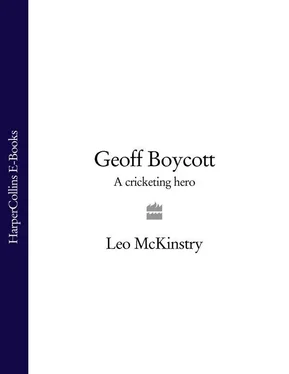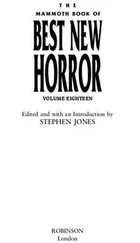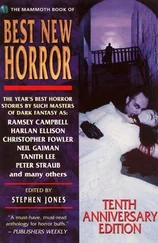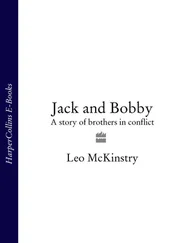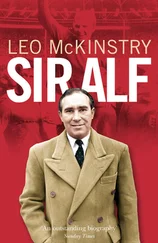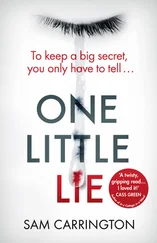Even today Doug Lloyd is unrepentant. ‘It still touches something in me. When I talk about Boycott, I just upset myself.’
3 ‘Dedicated Absolutely to Cricket’
From Fitzwilliam Junior School, Boycott, having failed his 11-plus, went to the local Kingsley Secondary Modern School. The teaching there was poor, the cricket facilities almost non-existent. The only positive result of this move was the development of his soccer skills, which he had already revealed playing in defence for Fitzwilliam youth club. As on the cricket field, he always wanted to win on the soccer pitch. He is remembered as a tough, physical player, with enough talent to attract the attention of Leeds United scouts in his mid-teenage years. He even played a few games for the famous club’s Under-18 team alongside Billy Bremner.
But cricket remained his first passion. Fortunately for Boycott, after just a year at Kingsley he passed the late-entry examination for grammar school and thereby won a place at nearby Hemsworth, which had both an excellent cricket ground and a cricket-loving headmaster in Russell Hamilton. With this kind of support, Hemsworth Grammar was to be almost as important for Boycott’s game as the Lawrence coaching clinic and Ackworth Cricket Club.
Hemsworth was a traditional institution, with a mixed intake of about 800 pupils, high academic and sporting standards, and strong leadership from Hamilton. ‘It was a smashing school. If you got there, you had a real sense of achievement,’ says one of Boycott’s fellow pupils, Terry Newitt. ‘Russell Hamilton was both strict and inspiring, the sort of gentleman you looked up to. When he walked down the corridor in his black flowing gown, we’d all jump out of the way.’ During his years at the school, Boycott proved himself to be not only an excellent cricketer but also a fine rugby player, a sound academic pupil and a mature, likeable young man. Ken Sale, who taught him biology and rugby, remembers him as ‘bright, diligent, anxious to please. In the classroom he was keen and alert. He was as careful in his approach to his studies as he was to his batsmanship. I also remember he was fastidious about his dress, always looking immaculate both on and off the field. As with most school sporting heroes, he was the idol of quite a few of the girls, had a little following of them, though I don’t think he was ever involved with any. He was a product of his background, very determined to get on and make the most of his talent at cricket. His personality could be described as intense; he didn’t seem to mix much but, underneath, I sensed he was a gentle, vulnerable pupil who tried to hide that vulnerability.’
Boycott was soon established in the Hemsworth First XI and at 15 he was made captain. Sale recalls that he had ‘a certain streak of arrogance about his game, which came from being so much better than the other boys’. In one match against the staff, Boycott was dominating as usual. Sale continues: ‘So our fast bowler, George Pacey, came on with the threat: “Right, I’m going to bowl as fast as I can straight at his legs.” I was fielding down at fine leg and soon Boycott was regularly clipping the ball straight past me. To make such a cool response to an adult fast bowler at only fifteen showed Boycott’s talent and character. He had an excellent defence off both front and back foot. He absolutely loathed to give up his wicket and hated any false strokes.’
The cricket coach at Hemsworth, Dudley Taylor, who was also a science teacher, has equally fond memories of Boycott. ‘Because he was a late-entry pupil, he was a year older than most in his class, so he seemed more mature. He was well-mannered and hardworking, though he could enjoy a laugh in the classroom.’ Taylor says that Boycott was good at all games, even basketball, and remembers him as a ‘brave and determined full back in rugby’. As with his soccer, his rugby skills aroused an interest beyond school – Boycott played in one Under 18 trial match for South Yorkshire District against Wakefield. Once more, however, it was his cricket that most impressed Taylor. ‘I knew even at thirteen that he would go on to play for Yorkshire. He was a more expansive player then but that is probably because he was in a different class to the other boys. I will never forget the way he played the pull. It was so effortless and the ball sped to the boundary, whereas the rest of us were liable to hit the ball in the air when we attempted that shot. In fact, he was so confident about technique that he actually used to coach the staff team in the nets.’
The tension that characterized many of his relationships in later life appears to have been largely absent during his time at Hemsworth, possibly because Boycott felt relaxed in his pre-eminence. Roland Howcroft, a schoolmate of the time, says: ‘He was always quite confident; there was no sense of insecurity about him. He was just a normal lad, liked normal things. On the buses to away games, for instance, he would join in singing with the rest of us. He was always outstanding at cricket, of course. Even in those days he was deadly serious about the game, was never a slogger or tried to hit over the top.’
Another of his Hemsworth contemporaries, Peter Jordan, now a journalist, says: ‘He was mature, sensible, never involved in any pranks and because he was serious and dedicated he seemed much older than the rest of us. Yet you could not have described him as a loner. He joined in everything at school and could take part as well as anyone in school debates. But there was never any bullshit with him. He never just talked for the sake of it but if he had something to say, he’d say it.’ Jordan was sure that Boycott would play for Yorkshire because of his determination. ‘He wanted to practise all the time. It was almost as if he was on a crusade. When he was out, he often didn’t come back into the pavilion but would sit on his own, holding an inquest on his dismissal. He was friendly and polite to the girls but nothing was going to stand in the way of his cricket, he was that dedicated. If he’d gone into medicine, he would be a top surgeon by now.’
One of Boycott’s closest friends at Hemsworth was the school wicket-keeper, Terry McCroakham, who therefore had some direct experience of Boycott the young bowler. ‘At this level, he was fast medium, very accurate, with a good inswinger. Because of his control, he was more reliable than many others.’ Against Castleford in 1956, Boycott had the remarkable figures of 7 for 4, though he finished up on the losing side. Like others from Hemsworth in the mid-fifties, McCroakham enjoyed Boycott’s company. ‘I never found him big-headed at all. There was no side to him, he was just part of the team. Yes, he could hog the strike but then he was a much better batsman than any of the rest of us. I don’t think he was a natural; you got the impression that he lived to practise. He was very ambitious, knew where he wanted to go.’ McCroakham has stayed in contact with Boycott and remains an admirer. ‘Just before the Leeds Test in 1964, he had damaged a hand and was having a net to see if he would be fit to play. I was standing nearby. Though he hadn’t seen me for seven years and was now an international player, he came straight over for a chat. To me, he has always been like that, unlike some other of these so-called England stars.’
Sadly, all the school records and scorebooks from this period were destroyed in a fire. However, Terry McCroakham has retained a press cutting from this period, which recorded Boycott’s largest innings for the school, when he made ‘a fine 105 not out’ from a Hemsworth total of 143 for 4 against Normanton Grammar School, ‘including two sixes and 14 fours’. Unfortunately rain brought the match to a premature end. Eddie Hambleton, another schoolfriend, remembers that day: ‘It started to rain quite heavily and the masters had a consultation. They then said that there were not often centuries in schools cricket so they would play a few more overs to give Geoff a chance to reach his hundred. When we came in about three overs later, Geoff had made 105. Back at school on Monday morning, we consulted the old scorebooks and found that the school record was 106. So Geoff just missed out there.’
Читать дальше
